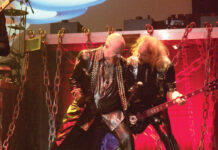
When discussing the current cinema landscape, it is normal to include animated films. Whether it’s Hayao Miyazaki’s work at Studio Ghibli or the Pixar films of Pete Doctor, animated films have been some of the most influential of the last couple decades. Among movies like “The Dark Knight” and “Parasite,” one cannot forget “Soul” or “Spider-Man: Into the Spider-Verse.” That being said, it is however important to reinstate that as good as an animated film can be, it will always lack an emotional resonance that its live-action counterpart provides.
Simply put, cinema is a medium of faces. Whether it is Carl Theodoe Dreyer’s “The Passion of Joan of Arc” or Christopher Nolan’s “Oppenheimer,” one of the most powerful tools of any filmmaker is the ability to cut to a reaction of a character’s face. The work of filmmakers like Ingmar Bergman has built their careers around capturing the human face in close-up. This is not to diminish the work of animators because, in a lot of ways, they are using the same tools, but the effect of capturing a human face versus depicting a face through rendering in 2D or 3D is completely different.
There is something psychological that happens when a viewer watches a human face get emotional. The camera can almost trick the brain into thinking the actor that is being viewed is physically in front of the viewer. The subtlety in the change of emotion that can be shown on a face is a result of the fact that there are over 40 muscles that can shift at one time. Whether it’s drawing a 2D character or creating a 3D model, this level of detail is almost impossible to replicate.
The magic of acting at its best is seeing an actor become completely immersed in their character’s world. Watching Heath Ledger become the Joker or Mikey Madison embody Anora is a transportive experience. When that happens, it makes any emotional reaction the characters have seem real and believable. In this way, live-action filmmaking takes on the power of a documentary. You are actually watching somebody cry, get angry or feel joy. Animation will never communicate this effect because even at its most realistic, it’s a recreation or rendering. And to its credit, this is where animation succeeds.
The ability of animation to abstract the real world is something live-action can only attempt to replicate. In an animated film, the world can go between realism and fantasy at the drop of a dime. This is what is so brilliant about Studio Ghibli and Pixar. The filmmakers at those respective studios understand how to harness the abstract qualities of animation and use it to its potential.
Some of the most affecting moments of “Grave of Fireflies” or “The Boy and the Heron” only work because they are animated. But in these films, what makes the viewer emotional comes more from the narrative than it does from the reaction of its characters, because their facial expression can never be as specific as a human face.
This is where voice acting comes in. Voice actors carry the world of animation by voicing the experiences of the characters on screen. But the nature of voice acting asks for a level of drama that is not required in a live-action performance. It would be occasionally boring to hear a voice actor speak the same way an actor would in live-action if their character is not experiencing an intense emotion. And this is because, once again, there is a lack of detail in the faces of these animated characters to communicate the nuance that a more muted vocal performance would contain.
There is nothing wrong with enjoying an animated film and having an emotional reaction, but to suggest that this will ever reach the heights of emotionality of a live-action film is naive and frankly insincere.







